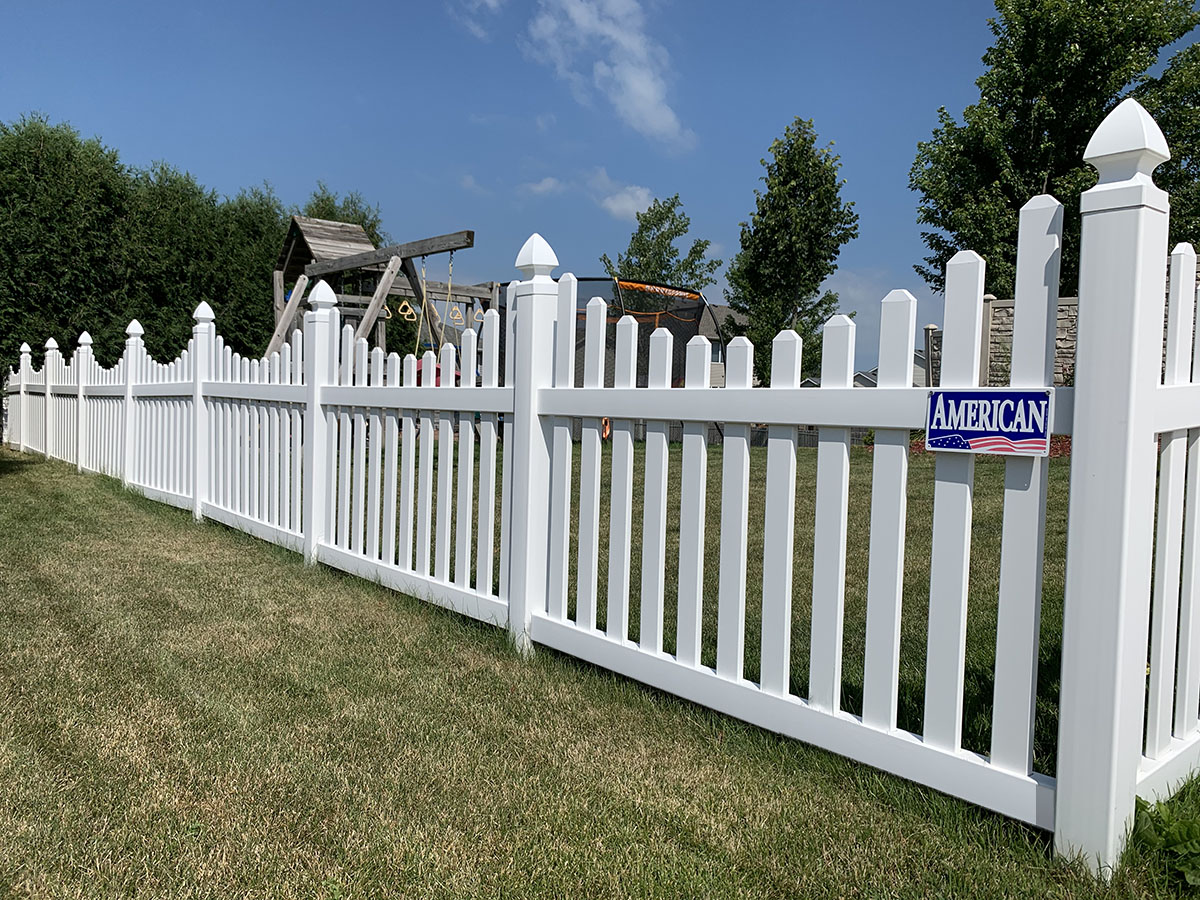All Categories
Featured
Installing a fencing on your building can include personal privacy, safety, and visual charm, yet prior to you start excavating openings and establishing posts, it's necessary to understand whether you need an authorization. Not getting the required permits can result in fines or the requirement to remove the fencing.
Why Are Permits Needed for Fencing Setup? Permits are necessary for ensuring that your fencing adheres to regional zoning regulations and building ordinance. These laws aid ensure the safety of your building and the bordering area. Additionally, permits protect against disputes with neighbors or local authorities, especially when it comes to building lines, elevation limitations, and total style.
In several situations, local authorities need authorizations to regulate things like visibility at junctions or the proximity of a fence to public rooms like roadways or sidewalks. Permits additionally aid make sure that fences are set up correctly and safely, specifically when it pertains to unique products or high fencings.
Usual Sorts Of Permits for Fence Installation. The kind of fencing you intend to install and your location will certainly figure out which permits are called for. Right here are one of the most common kinds:
Structure Permit. A building permit is typically needed for fencings that surpass certain height restrictions (frequently above 6 feet), lie near a public roadway or pathway, or are made from certain materials. Building permits make certain that the framework fulfills local building ordinance, consisting of safety criteria.
Zoning License. Zoning authorizations are commonly needed to ensure that your fence abides by regional zoning laws. Zoning laws can specify where a fencing can be put on your residential property (e.g., along residential or commercial property lines or in front backyards), as well as established limits on fencing height. These laws are made to avoid blockages that could impact traffic safety or neighborhood appearances.
![]()
Setback Permit. In some areas, you might require a problem authorization to place your fencing a specific distance from residential or commercial property utilities, roads, or lines. Problems are meant to preserve appropriate space in between structures and residential or commercial property borders, lowering prospective problems with next-door neighbors or public framework.
Homeowners Association (HOA) Authorization. You will likely require approval from the HOA prior to setting up a fence if your residential or commercial property is part of a neighborhood regulated by a Homeowners Organization (HOA) HOA standards usually regulate the design, elevation, materials, and even shade of fences, making certain that they match the total visual of the neighborhood.
The Refine for Acquiring a Fence Permit. To obtain a fencing permit, you normally require to call your regional city or region workplace. Most areas have a structure division or preparation office where you can apply for authorizations. The process includes finishing an application and supplying in-depth details concerning your suggested fence, including:
Fencing style (materials, elevation, style) Place on the residential property. Residential property line information (for exact placement) In numerous instances, a website plan showing the suggested fence's setting will certainly be needed. You may also need to pay an authorization cost, which can differ based on place and the intricacy of the task.
Once you submit your application, the neighborhood authorities will certainly evaluate it to guarantee the fence follows local laws. Depending on your area, you may also require to allow or set up an evaluation for a property study.
When Do You Not Required a Permit? In some instances, a permit might not be called for. Normally, you may not require an authorization if:
![]()
The fence is under a specific height (usually 3-4 feet for front backyards) You're changing an existing fence with the same type and height. The fencing is momentary (such as a garden fencing) It's always an excellent concept to inspect with your neighborhood structure or zoning department to validate the needs, as rules can differ.
Consequences of Not Obtaining a Permit. In some cases, you may need to re-install the fence according to code, which can be costly and time-consuming. In addition, not complying with the proper permitting procedure can produce troubles with next-door neighbors, especially if your fencing prolongs beyond your residential or commercial property line or doesn't satisfy height or style needs.
Final thought. Before mounting a fence, ensure you're conscious of the neighborhood regulations and whether you require a license. It is essential to consult your regional structure or zoning workplace, along with your HOA if relevant, to comprehend what's required. By obtaining the appropriate authorizations, you'll ensure that your fencing is lawfully certified, safe, and without future complications. Taking this additional step will conserve you money and time over time while giving assurance that your job is on the appropriate track.
Why Are Permits Needed for Fencing Setup? Permits are necessary for ensuring that your fencing adheres to regional zoning regulations and building ordinance. These laws aid ensure the safety of your building and the bordering area. Additionally, permits protect against disputes with neighbors or local authorities, especially when it comes to building lines, elevation limitations, and total style.
In several situations, local authorities need authorizations to regulate things like visibility at junctions or the proximity of a fence to public rooms like roadways or sidewalks. Permits additionally aid make sure that fences are set up correctly and safely, specifically when it pertains to unique products or high fencings.
Usual Sorts Of Permits for Fence Installation. The kind of fencing you intend to install and your location will certainly figure out which permits are called for. Right here are one of the most common kinds:
Structure Permit. A building permit is typically needed for fencings that surpass certain height restrictions (frequently above 6 feet), lie near a public roadway or pathway, or are made from certain materials. Building permits make certain that the framework fulfills local building ordinance, consisting of safety criteria.
Zoning License. Zoning authorizations are commonly needed to ensure that your fence abides by regional zoning laws. Zoning laws can specify where a fencing can be put on your residential property (e.g., along residential or commercial property lines or in front backyards), as well as established limits on fencing height. These laws are made to avoid blockages that could impact traffic safety or neighborhood appearances.

Setback Permit. In some areas, you might require a problem authorization to place your fencing a specific distance from residential or commercial property utilities, roads, or lines. Problems are meant to preserve appropriate space in between structures and residential or commercial property borders, lowering prospective problems with next-door neighbors or public framework.
Homeowners Association (HOA) Authorization. You will likely require approval from the HOA prior to setting up a fence if your residential or commercial property is part of a neighborhood regulated by a Homeowners Organization (HOA) HOA standards usually regulate the design, elevation, materials, and even shade of fences, making certain that they match the total visual of the neighborhood.
The Refine for Acquiring a Fence Permit. To obtain a fencing permit, you normally require to call your regional city or region workplace. Most areas have a structure division or preparation office where you can apply for authorizations. The process includes finishing an application and supplying in-depth details concerning your suggested fence, including:
Fencing style (materials, elevation, style) Place on the residential property. Residential property line information (for exact placement) In numerous instances, a website plan showing the suggested fence's setting will certainly be needed. You may also need to pay an authorization cost, which can differ based on place and the intricacy of the task.
Once you submit your application, the neighborhood authorities will certainly evaluate it to guarantee the fence follows local laws. Depending on your area, you may also require to allow or set up an evaluation for a property study.
When Do You Not Required a Permit? In some instances, a permit might not be called for. Normally, you may not require an authorization if:

The fence is under a specific height (usually 3-4 feet for front backyards) You're changing an existing fence with the same type and height. The fencing is momentary (such as a garden fencing) It's always an excellent concept to inspect with your neighborhood structure or zoning department to validate the needs, as rules can differ.
Consequences of Not Obtaining a Permit. In some cases, you may need to re-install the fence according to code, which can be costly and time-consuming. In addition, not complying with the proper permitting procedure can produce troubles with next-door neighbors, especially if your fencing prolongs beyond your residential or commercial property line or doesn't satisfy height or style needs.
Final thought. Before mounting a fence, ensure you're conscious of the neighborhood regulations and whether you require a license. It is essential to consult your regional structure or zoning workplace, along with your HOA if relevant, to comprehend what's required. By obtaining the appropriate authorizations, you'll ensure that your fencing is lawfully certified, safe, and without future complications. Taking this additional step will conserve you money and time over time while giving assurance that your job is on the appropriate track.
Latest Posts
Learn How to Reduce Expenses on Car Maintenance with Montclare Auto Repair’s Exclusive Deals
Published en
1 min read
Specialist Commercial Roof Solutions in North Platte, Nebraska
Published en
2 min read
Dependable Expenses Door Solutions for Residences and Services
Published en
1 min read
More
Latest Posts
Learn How to Reduce Expenses on Car Maintenance with Montclare Auto Repair’s Exclusive Deals
Published May 27, 25
1 min read
Specialist Commercial Roof Solutions in North Platte, Nebraska
Published May 24, 25
2 min read
Dependable Expenses Door Solutions for Residences and Services
Published May 23, 25
1 min read